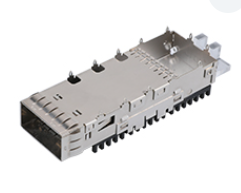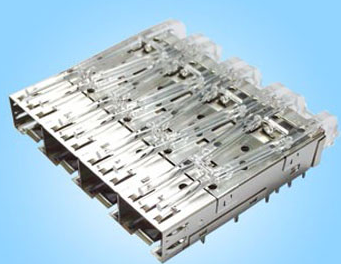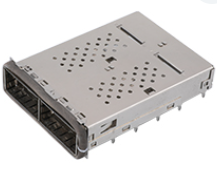While SFP connectors offer unparalleled flexibility and scalability, brand compatibility issues can lead to frustrating bottlenecks and unexpected downtime. This guide dives deep into the causes of different brands sfp connectors compatibility problems and provides actionable strategies to fix them — helping you build a more resilient and cost-effective network.
Small Form-factor Pluggable (SFP) connectors are compact, hot-swappable modules that seamlessly link networking hardware, such as switches and routers, to fiber optic or copper cabling. Acting as the critical interface between different networking components, SFP modules enable scalable and flexible network expansion. They are versatile, supporting multiple communication standards like Ethernet, Fibre Channel, and SONET, thus allowing networks to evolve without the need for extensive hardware overhauls.
Fundamentally, an SFP connector's role is to facilitate high-speed data transmission by converting electrical signals into optical signals, and vice versa. Thanks to their modularity, SFP modules offer significant advantages in terms of cost-efficiency, adaptability, and network uptime, especially when compared to fixed transceiver solutions.

Learn more:
https://www.glgnet.biz/QSFP-Connector-System
Below is a table summarizing the various types of SFP modules, highlighting their key specifications and typical use cases:
|
Type |
Speed |
Typical Applications |
|
SFP (Standard) |
Up to 1 Gbps |
Traditional Ethernet networks |
|
SFP+ (Enhanced) |
Up to 10 Gbps |
Modern data centers, high-speed enterprise networks |
|
SFP28 |
Up to 25 Gbps |
High-performance computing environments |
|
QSFP/QSFP+ |
40 Gbps / 100 Gbps |
Data aggregation, backbone connections |
|
BiDi SFPs |
Varies |
Cost-effective single fiber bidirectional communication |
|
CWDM/DWDM SFPs |
Varies |
Long-distance, high-capacity fiber optic networks |
Understanding these module types is crucial for selecting the appropriate SFP that matches the required speed, transmission distance, and network topology.
Brand compatibility issues between SFP connectors and modules stem from both hardware-level restrictions and software-level validations set by device manufacturers. These measures aim to ensure system performance but often create interoperability challenges across different brands.
Many networking vendors design their SFP module connector ports to recognize only modules that meet specific hardware signature requirements. Proprietary pin configurations or slight deviations in the connector standards can cause third-party modules to be rejected or to operate unstably.
In addition to physical constraints, manufacturers also deploy firmware-based authentication protocols. During module insertion, the device firmware checks the vendor ID embedded in the module's EEPROM. If an unapproved brand is detected, the port may disable the connection, restrict link speeds, or trigger error alerts.
Manufacturers often argue that using their certified modules ensures better compatibility and system longevity. In contrast, even high-quality third-party modules might face stricter scrutiny or artificial restrictions when inserted into brand-specific SFP connectors.
Beyond technical aspects, vendors encourage brand loyalty by offering warranty protections and priority technical support only when their certified modules are used. This further complicates cross-brand deployment, locking network administrators into a single-vendor ecosystem.

Successfully resolving brand compatibility issues at the SFP module connector level requires a strategic approach that balances reliability, operational flexibility, and cost-efficiency. Here are five effective solutions:
Vendor-certified transceivers are specifically tested and validated to work seamlessly with the manufacturer's SFP ports. They ensure consistent performance, minimize troubleshooting needs, and provide full access to vendor support and warranties.
However, these modules typically carry higher costs and may restrict future hardware flexibility, particularly when building multi-brand network environments.
High-quality generic or multi-vendor SFPs are engineered for broad compatibility across different network devices. They present an attractive option for organizations aiming to reduce procurement costs without sacrificing stability.
Nevertheless, occasional firmware warnings or minor integration challenges may arise, especially if device firmware enforces strict validation. Careful vendor selection and pre-deployment testing are essential to maintain SFP connection reliability.
Some networking vendors, such as Cisco, provide undocumented commands that allow administrators to bypass built-in module restrictions. For example, service unsupported-transceiver can enable third-party modules to operate without issues.
While software overrides offer a cost-effective workaround, they come with the trade-off of voided warranties and reduced eligibility for vendor technical support. It is crucial to thoroughly test overrides before applying them to production networks.

Firmware updates can expand device compatibility lists, allowing more flexibility in choosing third-party modules. Similarly, firmware downgrades may restore previous levels of compatibility that newer versions have restricted.
Yet, modifying firmware always carries risks, including device instability or security vulnerabilities. Any firmware changes must be carefully evaluated, ideally tested in a sandbox environment before wide deployment.
Professional EEPROM coding services can reprogram third-party SFP modules to match the required identifiers of specific brands. This enables seamless recognition by devices that typically restrict non-certified modules.
Although coding offers a powerful solution, success depends heavily on the technical skill of the service provider. Poorly executed reprogramming can lead to inconsistent module behavior or physical port instability.
|
Solution |
Pros |
Cons |
|
Vendor-Certified Transceivers |
Seamless connector operation, full warranty support |
High cost, vendor lock-in |
|
Generic/Multi-Vendor SFPs |
Cost-effective, flexible across different SFP connectors |
Occasional firmware warnings, minor compatibility risks |
|
Software/Command Line Overrides |
Unlocks third-party use at connector level |
Warranty void risk, limited vendor support |
|
Firmware Upgrades/Downgrades |
Broader SFP connector support range |
Instability and security risks if mishandled |
|
Third-Party Coding Services |
OEM-like module recognition on branded connectors |
Dependence on vendor quality, potential reprogramming risks |
By implementing these strategies, network engineers can maintain stable connector SFP operations while optimizing both performance and costs.
Learn more:
https://www.glgnet.biz/how-sfp-connectors-boost-data-center-performance
https://www.glgnet.biz/how-to-choose-between-sfp-and-rj45-connectors-for-your-network
Conclusion
Brand compatibility challenges with SFP connectors are a common yet manageable issue in modern networking. By understanding the underlying causes and applying the right solutions — from using vendor-certified modules to leveraging advanced techniques like third-party coding — you can maintain reliable SFP connections across diverse environments.